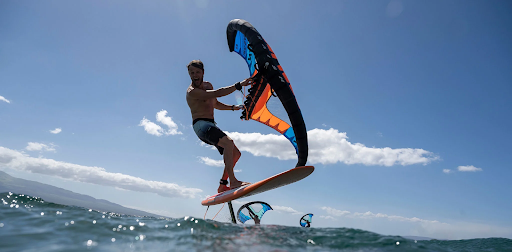Contents
Introduction
Wingfoiling, a relatively new watersport, has been gaining popularity for its versatility and the unique experience it offers. Combining elements of windsurfing, kitesurfing, and stand-up paddleboarding (SUP), wingfoiling involves riding a hydrofoil board while holding a handheld inflatable wing. This innovation prompts many enthusiasts to wonder about the versatility of a wingfoil board. Can it be used for surfing or other water activities? This article explores the potential uses of a wingfoil board beyond its intended purpose.
Understanding Wingfoil Boards
What is a Wingfoil Board?
A wingfoil board is designed specifically for wingfoiling. It typically features a hydrofoil attached to the bottom, which allows the rider to lift off the water’s surface, reducing drag and providing a smooth, gliding sensation. The boards are often shorter and wider than traditional surfboards, offering stability and maneuverability crucial for foiling.
Key Features of Wingfoil Boards
- Hydrofoil Attachment: The most distinctive feature, the hydrofoil, consists of a mast, fuselage, and wings, enabling the board to lift off the water.
- Shape and Size: Wingfoil boards are generally compact, with a width that ensures stability.
- Construction Materials: Made from lightweight yet durable materials like carbon fiber and epoxy, these boards are designed to withstand the forces encountered during foiling.
Using a Wingfoil Board for Surfing
Differences Between Wingfoil Boards and Surfboards
While both wingfoil boards and surfboards are designed for water sports, they differ significantly in their construction and intended use:
- Buoyancy and Volume: Surfboards are usually designed to float on the water’s surface, whereas wingfoil boards are optimized for foiling above the water.
- Shape and Design: Surfboards are typically longer and narrower compared to the compact, wide design of wingfoil boards.
- Hydrofoil: The presence of the hydrofoil changes the dynamics of how the board interacts with water.
Surfing on a Wingfoil Board
Using a wingfoil board for traditional surfing can be challenging due to its design:
- Foil Removal: For surfing, the hydrofoil needs to be removed to avoid it catching on waves and creating drag.
- Stability: The wide and short design can offer stability, but the lack of length may make catching and riding waves harder.
- Performance: Wingfoil boards may not perform as well as surfboards in terms of speed and maneuverability on waves.
Other Activities with a Wingfoil Board
Stand-Up Paddleboarding (SUP)
One popular alternative use for wingfoil boards is stand-up paddleboarding:
- Stability: The wide design of wingfoil boards provides excellent stability for SUP.
- Paddleboarding Without the Foil: Removing the foil allows the board to function similarly to a traditional SUP board.
- Versatility: The board’s shape makes it suitable for calm waters and small waves, making it a versatile option for paddleboarding enthusiasts.
Windsurfing
Wingfoil boards can also be adapted for windsurfing:
- Sail Attachment: By attaching a windsurfing sail, the board can be used for light wind windsurfing.
- Hydrofoil Advantages: The hydrofoil can provide a smooth ride, similar to windsurf foiling.
Pros and Cons of Using Wingfoil Boards for Other Activities
Pros
- Versatility: Wingfoil boards can be adapted for multiple water sports, making them a valuable investment.
- Stability: Their wide design offers stability, beneficial for beginners in various water activities.
- Lightweight and Durable: The materials used in construction ensure the boards are both lightweight and durable.
Cons
- Specialization: Wingfoil boards are specialized for foiling, and adapting them for other uses may compromise performance.
- Cost: High-quality wingfoil boards can be expensive, and additional equipment might be needed for other activities.
- Learning Curve: Transitioning from a wingfoil board to other activities like surfing can have a steep learning curve due to design differences.
Conclusion
Wingfoil boards, with their innovative design and versatility, open up a world of possibilities beyond their primary use. As a type of foil board, they can be adapted for activities like surfing, stand-up paddleboarding, and windsurfing. While their performance may not match specialized equipment for those sports, they still offer a unique experience. For water sports enthusiasts looking to explore multiple activities with a single board, wingfoil boards present a compelling option. Whether you’re gliding above the water, paddling on a calm lake, or catching waves, a wingfoil board offers a unique and adaptable experience.

Sarah Wilson, an accomplished writer and seasoned blogger, weaves compelling narratives that transport readers to new and uncharted worlds. With a talent for vivid storytelling and thoughtful insight, her work leaves a lasting mark, enchanting both the imagination and intellect.
